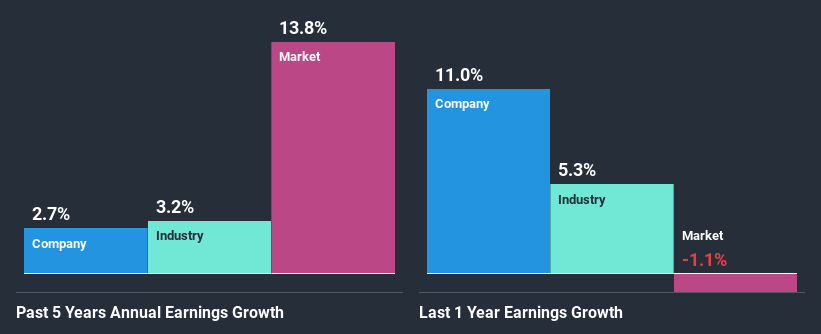Should Weakness in Australian Pharmaceutical Industries Limited's (ASX:API) Stock Be Seen As A Sign That Market Will Correct The Share Price Given Decent Financials?

With its stock down 2.2% over the past week, it is easy to disregard Australian Pharmaceutical Industries (ASX:API). However, stock prices are usually driven by a company’s financials over the long term, which in this case look pretty respectable. Specifically, we decided to study Australian Pharmaceutical Industries' ROE in this article.
Return on equity or ROE is a key measure used to assess how efficiently a company's management is utilizing the company's capital. In other words, it is a profitability ratio which measures the rate of return on the capital provided by the company's shareholders.
View our latest analysis for Australian Pharmaceutical Industries
How Is ROE Calculated?
Return on equity can be calculated by using the formula:
Return on Equity = Net Profit (from continuing operations) ÷ Shareholders' Equity
So, based on the above formula, the ROE for Australian Pharmaceutical Industries is:
11% = AU$54m ÷ AU$509m (Based on the trailing twelve months to February 2020).
The 'return' is the amount earned after tax over the last twelve months. So, this means that for every A$1 of its shareholder's investments, the company generates a profit of A$0.11.
What Has ROE Got To Do With Earnings Growth?
We have already established that ROE serves as an efficient profit-generating gauge for a company's future earnings. Based on how much of its profits the company chooses to reinvest or "retain", we are then able to evaluate a company's future ability to generate profits. Assuming everything else remains unchanged, the higher the ROE and profit retention, the higher the growth rate of a company compared to companies that don't necessarily bear these characteristics.
Australian Pharmaceutical Industries' Earnings Growth And 11% ROE
To start with, Australian Pharmaceutical Industries' ROE looks acceptable. Even when compared to the industry average of 11% the company's ROE looks quite decent. Despite the moderate return on equity, Australian Pharmaceutical Industries has posted a net income growth of 2.7% over the past five years. A few likely reasons that could be keeping earnings growth low are - the company has a high payout ratio or the business has allocated capital poorly, for instance.
We then performed a comparison between Australian Pharmaceutical Industries' net income growth with the industry, which revealed that the company's growth is similar to the average industry growth of 3.2% in the same period.
Earnings growth is a huge factor in stock valuation. It’s important for an investor to know whether the market has priced in the company's expected earnings growth (or decline). By doing so, they will have an idea if the stock is headed into clear blue waters or if swampy waters await. Has the market priced in the future outlook for API? You can find out in our latest intrinsic value infographic research report.
Is Australian Pharmaceutical Industries Making Efficient Use Of Its Profits?
Australian Pharmaceutical Industries has a three-year median payout ratio of 70% (implying that it keeps only 30% of its profits), meaning that it pays out most of its profits to shareholders as dividends, and as a result, the company has seen low earnings growth.
Upon studying the latest analysts' consensus data, we found that the company is expected to keep paying out approximately 80% of its profits over the next three years. Still, forecasts suggest that Australian Pharmaceutical Industries' future ROE will drop to 8.2% even though the the company's payout ratio is not expected to change by much.
Conclusion
In total, it does look like Australian Pharmaceutical Industries has some positive aspects to its business. Its earnings have grown respectably as we saw earlier, which was likely due to the company reinvesting its earnings at a pretty high rate of return. However, given the high ROE, we do think that the company is reinvesting a small portion of its profits. This could likely be preventing the company from growing to its full extent. With that said, the latest industry analyst forecasts reveal that the company's earnings are expected to accelerate. Are these analysts expectations based on the broad expectations for the industry, or on the company's fundamentals? Click here to be taken to our analyst's forecasts page for the company.
This article by Simply Wall St is general in nature. It does not constitute a recommendation to buy or sell any stock, and does not take account of your objectives, or your financial situation. We aim to bring you long-term focused analysis driven by fundamental data. Note that our analysis may not factor in the latest price-sensitive company announcements or qualitative material. Simply Wall St has no position in any stocks mentioned.
Have feedback on this article? Concerned about the content? Get in touch with us directly. Alternatively, email editorial-team@simplywallst.com.

 Yahoo Finance
Yahoo Finance 
